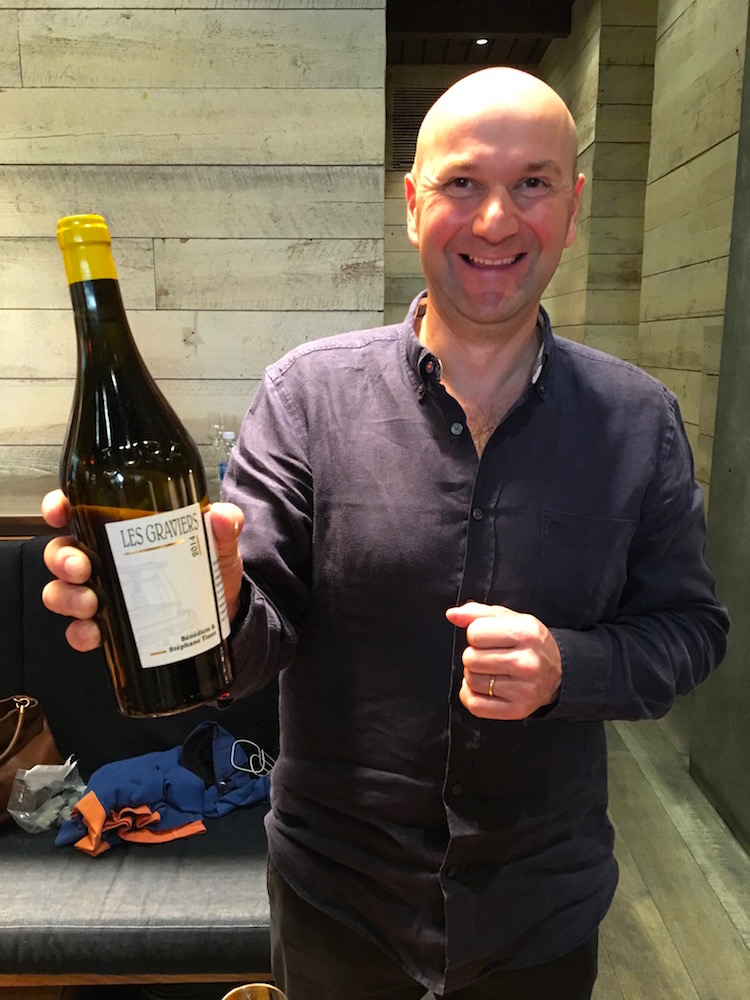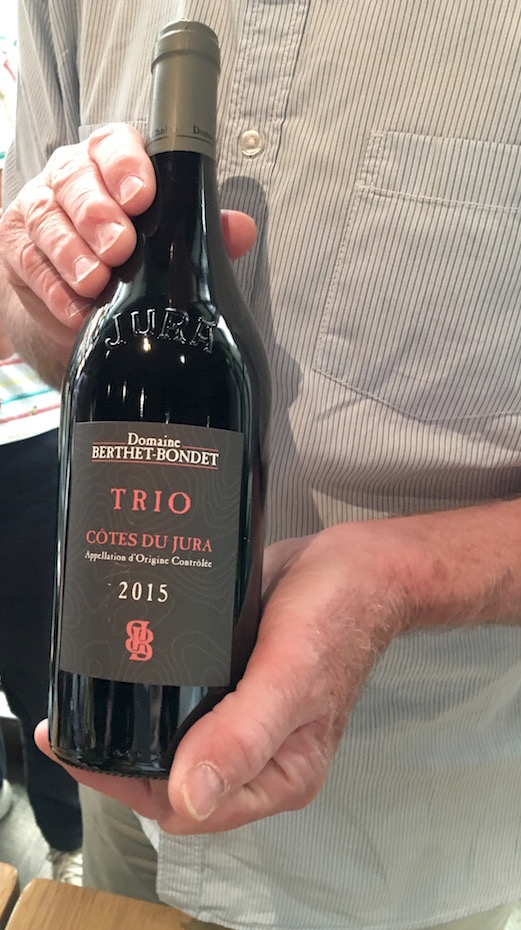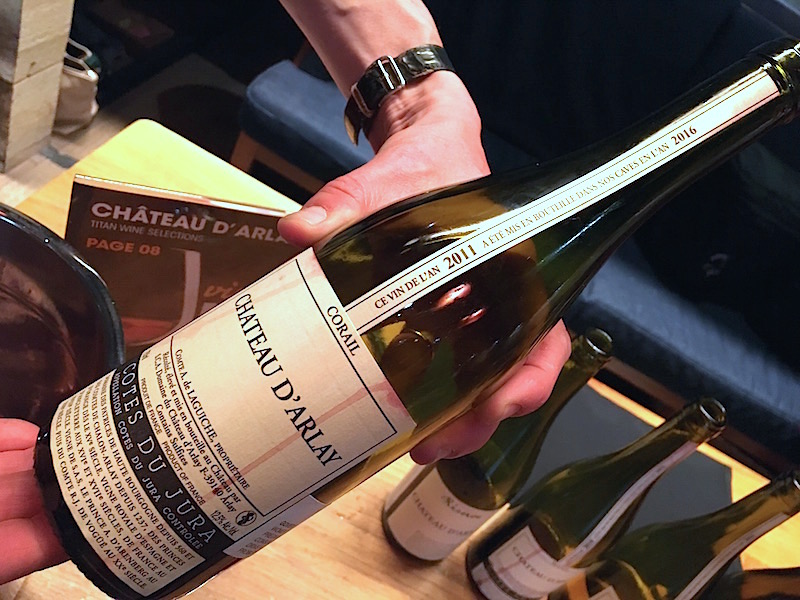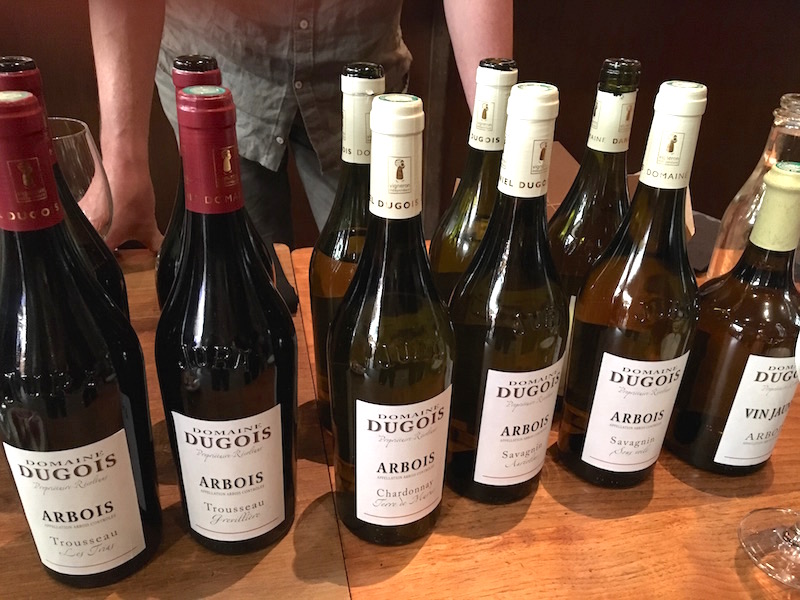France's Unique Jura Wines
/When I lived in Paris, I loved the diverse French wine options I could find everywhere from high end restaurants to the grocery store. You didn't just see the big boys of Bordeaux and Burgundy, though I can't say I ever tired of seeing those guys. I only wish the prices in the US were as friendly as those from my local Monoprix! Luckily there are many other French wines that are deserving of attention for both their price, as well as their taste. Jura is one such region that is producing reasonably priced wines that run the flavor gamut like no other.
Jura is the smallest wine region in France, about the size of Margaux, but they pack a lot of unique elements into their wines. It's been called Burgundy Lite. Both Burgundy and Jura have clay-rich marl as well as limestone, but Jura's climate is slightly cooler and they have much more limestone, which brings a strong acidic backbone to many of their wines. There are 5 recognized grapes across Jura's 4 major AOCs. Let's take a look.
Savagnin
If you've had Jura wines, you may be familiar with their distinctive oxidative wines like Vin Jaune aka yellow or golden wine. Vin Jaune uses the Savagnin grape, one of the hero grapes of the Jura. After pressing, the Savagnin juice gets real comfortable in the oak barrel since it spends a minimum of 6 years and 3 months in there, untouched and with a little air since the cask isn't completely filled. During this time, a hefty yeast layer forms on top and provides some protection from the air above, in addition to lending a deep yellow hue to the wine. It's such a special wine that it has its own petite 62 cl bottle called a Clavelin. Sadly, the US doesn't allow this size bottle in the country, but there are a few work arounds for the determined wine drinker. The taste is distinctive - nutty, peaty, yeasty and bone dry. If you like sherry, you'll love Vin Jaune. Pair it with anything creamy like cheese, foie gras, mushrooms or even shellfish.
Chardonnay
Chardonnay is the largest planted grape in Jura and is the other recognized grape to make white wine in Jura, alongside Savagnin. Domain Benoit Badoz's Arrogance is 100% Chardonnay and delivers a creamy punch with great minerality, perfect for salmon or other fish in cream sauce. Domaine Andre et Mireille Tissot also has a strong selection of Chardonnays from the AOC region of Arbois. The Les Graviers shows off the limestone soil while the Les Bruyeres Chardonnay is grown in clay, offering a different, but equally balanced wine. Tissot's wines are all biodynamic with no chemicals added. Look for them. Tissot has a solid portfolio.
Vin de Paille, or straw wine, is a sweet wine, often made with a blend of the two whites from Jura, and sometimes even with some of the red. The grapes are picked early and then left to dry and develop strong sugars, making it a nice companion to chocolate and other desserts.
Pinot Noir
Since Jura is so close to Burgundy, it's no surprise that Chardonnay and Pinot Noir are 2 of the 5 recognized grapes there. The Pinot Noir grape in Jura, however, is quite different than it's neighbor. The grapes thrive in the gravel soil, but are still susceptible to weather shifts so need to be handled with care. It's the darkest juice of the bunch, but don't let the color fool you. Domaine Cedric Joly's Les Soupois Pinot has a delicate floral nose and white pepper finish. You'll also find Jura's Pinot Noir blended with other grapes. Doamine Berthet-Bondet produces a balanced red using the red grapes from the region, as does Chateau D'Arlay. Chateau D'Arlay not only produces a red blend, but they also make a Cote Du Jura Corail that blends all of the grapes in the area for a best in region blend. They also have an interesting tradition of printing both a bottled and vintage date right on the label for full transparency.
Trousseau
Trousseau is one of the 3 recognized grapes for red wine in Jura, and I have to say, I think it's my favorite. The grape needs sun and warmth, much like me. The tannins give it some good aging potential - I'll take that as well. Overall Jura's reds are across the board lighter in both color and taste. In fact, at a recent tasting, the reds were served before the whites. Look for producers Domaine Baud and Domaine Daniel Dugoig who are both making solid Trousseau's. In fact Domaine Baud's Trousseau only retails for 9 euros in France, which I think means that it's time for me to make another trip, but Jura wines can increasingly now be found now in the US. Many of the wines also have a lower alcohol level around 12.5%, making it a great summer sipper. They do recommend a slight chill to these wines too. Consider them for your next Thanksgiving meal.
Poulsard
The last recognized grape in Jura is Poulsard or Ploussard. Poulsard is often used for blending and can even be made into a Rose. The color is a light coral - red. I had a stainless steel fermented 100% Poulsard from Domain de la Touraize, which was called a winemaker's man due to the care and attention it needs. There's wild berries with an earthy minerality that would make it perfect to drink with cheese or other fatty, rich starter.
There's a great variety of wines coming out of Jura that also include sparkling Cremants all the way to a fortified Macvin which combines Savagnin grapes with fortified brandy. Jura wines are for the wine enthusiast, eager to try something new and ready to be surprised and delighted.



















